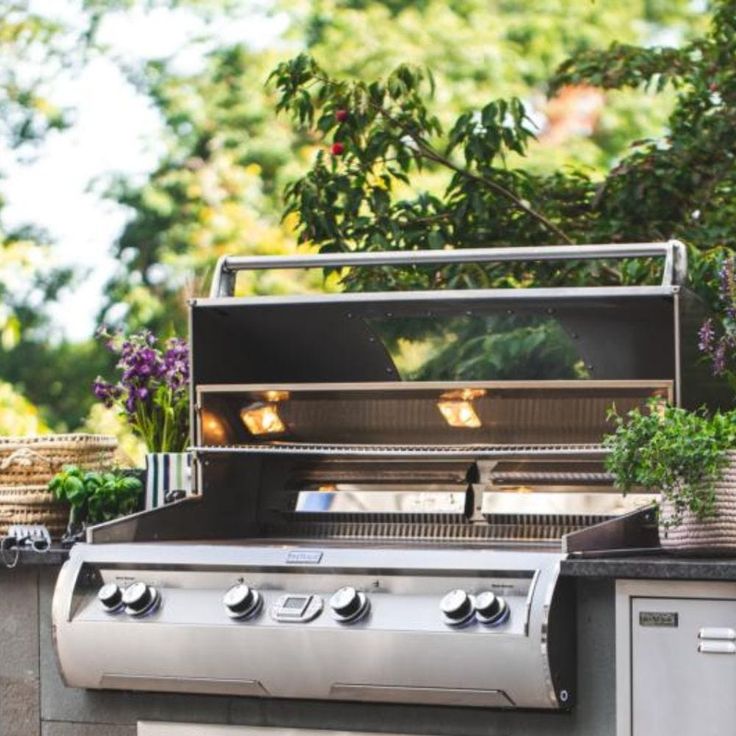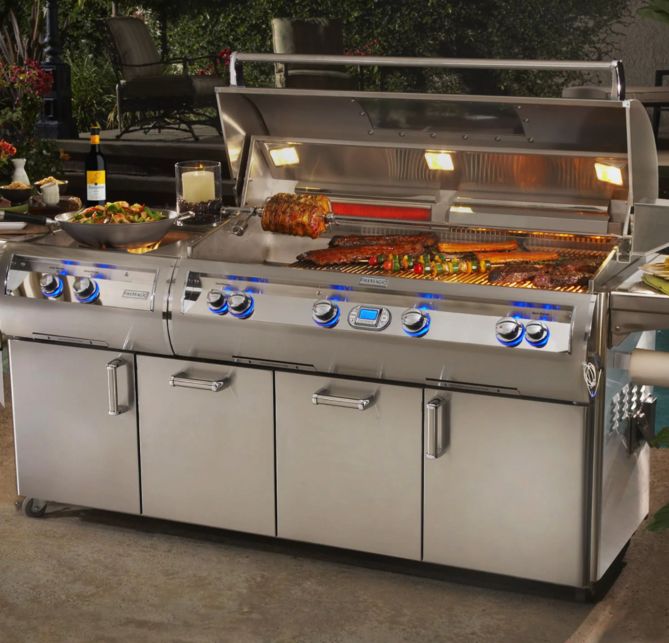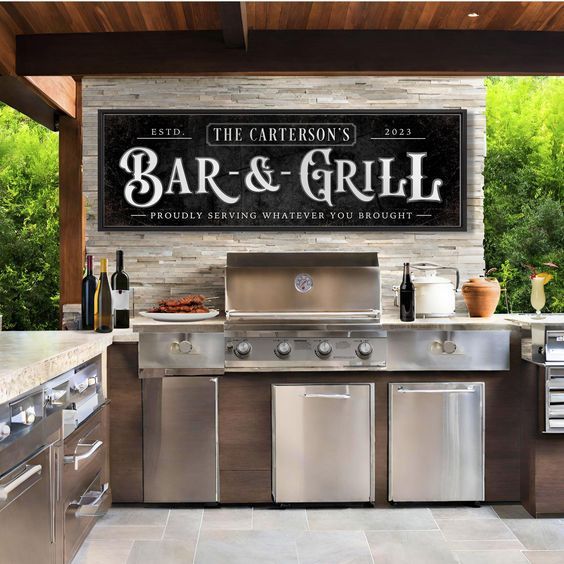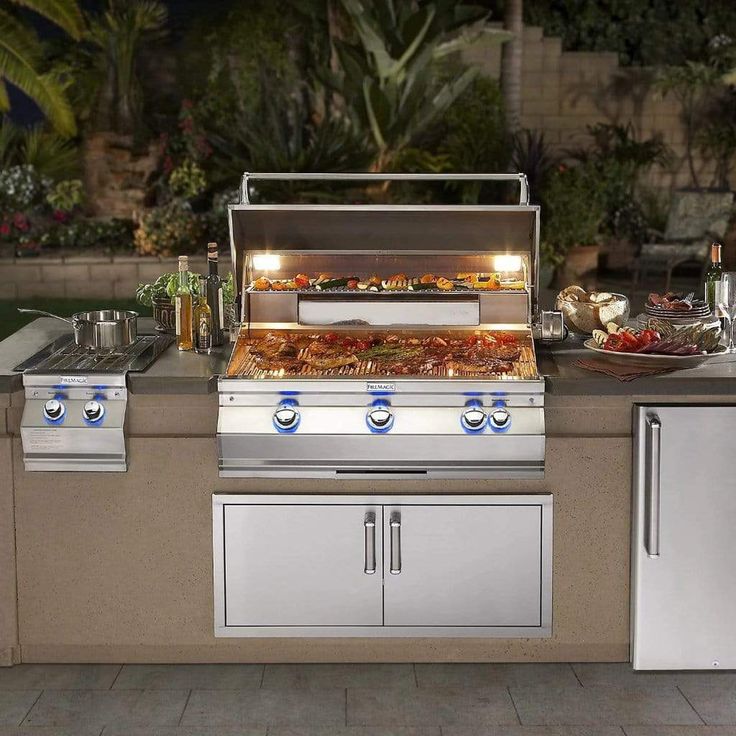Grilling is often the highlight of family dinners, backyard gatherings, and summer weekends. But nothing ruins the fun faster than a grill that does not heat evenly, produces weak flames, or struggles to light up. Many grill owners think it is the gas tank, but in reality, the burners are often the hidden culprit.
You know it is time to replace your gas grill burners when the flames are uneven, yellow, or weak, when rust eats through the tubes, or when cleaning no longer restores performance. Replacing burners is simple, safe, and ensures your grill cooks food evenly again.
If you have ever stood by a grill wondering why half your steak sears while the other half barely cooks, you are not alone. Burners play a crucial role in distributing heat, and when they start to fail, the whole cooking experience suffers. The following sections will help you spot the warning signs, understand why burners fail, and learn how to replace them step by step.
What are the signs of bad gas grill burners?
A gas grill can look fine on the outside while hiding problems inside. Burners slowly wear down due to constant heat, grease, and exposure to weather. Owners often miss the early clues and only notice when grilling becomes frustrating.
The main signs of bad burners include uneven flames, frequent flare-ups, slow heating, and visible rust holes. If your grill takes longer to preheat or cannot hold steady heat, the burners are likely failing.
When you lift the lid and check the flames, they should be even, blue, and strong. If they are yellow or only appear in patches, the burner ports may be clogged or corroded. Another sign is flare-ups that happen too often because grease collects where the burner no longer burns cleanly. Rust is another big clue. Once holes appear in the burner tubes, gas escapes in random spots, creating unsafe flame patterns. Even the smell of gas can indicate cracks or leaks.
Common visible signs
| Problem | What you see | What it means |
|---|---|---|
| Uneven flames | Only some burner holes produce flame | Clogged or damaged ports |
| Yellow flames | Flame looks orange or yellow | Poor combustion or blocked air flow |
| Rust holes | Visible spots eaten through metal | Burner integrity compromised |
| Delayed ignition | Takes too long to light | Gas flow obstruction |
| Weak heat | Grill does not reach target temperature | Burners losing efficiency |

Bad burners not only waste gas but also cook food unevenly. The difference between a working grill and one with failing burners can mean the difference between juicy burgers and raw, unsafe meat. Understanding these signs helps you act before the problem becomes worse.
Why is my gas grill not heating evenly?
Few things frustrate grillers more than uneven cooking zones. One side of the grill roasts the food while the other barely sizzles. This uneven heat usually points back to burner performance.
A gas grill that does not heat evenly often has clogged burner holes, rust damage, or misaligned burner tubes. Poor gas flow in one section prevents even heat distribution.
When burners are clogged with grease or carbon, gas cannot escape evenly through the ports. That makes flames cluster in some spots while leaving others weak. Rust is another enemy. Once metal wears away, holes in the burner tube throw off the gas flow. Even something as simple as a misaligned burner tube can change the direction of the flame and weaken heating across the grate.
Troubleshooting uneven heating
| Cause | Effect | Solution |
|---|---|---|
| Clogged burner holes | Flame only on part of burner | Clean with brush or thin wire |
| Rust and corrosion | Gas escapes from wrong areas | Replace burner |
| Misalignment | Flame points away from grate | Realign burner tube |
| Low gas pressure | Weak flames overall | Check regulator and tank |

Uneven heat affects how food cooks. A steak may char on one side while the other remains raw. Vegetables may burn in one spot and stay hard in another. Regular inspection, cleaning, and replacement of burners can prevent this problem. Once you restore consistent flame across the burners, grilling becomes reliable again.
How long do gas grill burners usually last?
Grill owners often wonder how long burners should last before replacement. The truth is that it depends on how often you grill, the material of the burners, and how well you maintain them.
Most gas grill burners last between two and five years. Stainless steel burners last longer, while thin steel or poorly maintained burners wear out faster.
Cast stainless burners are known for long life, often more than five years when cleaned regularly. Basic stainless steel or porcelain-coated steel burners may last around three years. Cheap thin-metal burners often wear down after two years. Frequency of use matters too. A grill used twice a week will wear burners faster than one used once a month. Cleaning habits also make a big difference. Burners brushed after each cook last much longer than ones left coated in grease.
Average burner lifespan
| Material | Average lifespan |
|---|---|
| Cast stainless steel | 5–7 years |
| Stainless steel | 3–5 years |
| Porcelain-coated steel | 2–4 years |
| Thin sheet metal | 1–3 years |
When flames grow weak, rust spreads, or cleaning no longer helps, replacement is better than pushing the burners longer. Investing in higher-quality burners may save money in the long run because they last longer and perform better.
Can rusted burners still be used safely?
Rust is one of the most common problems with gas grill burners. Every time the grill is used outdoors, moisture, humidity, and grease create conditions for rust to spread.
Light surface rust can be cleaned, but burners with deep rust holes are unsafe and must be replaced. Rust weakens the metal and can cause uneven flames and gas leaks.
If you see only a little orange-brown surface rust, a wire brush can usually clean it away. Some owners also use baking soda paste to remove light rust. However, once rust digs deeper, it creates pits and holes in the burner tube. This is dangerous because gas escapes through unintended spots, making flames unpredictable. These irregular flames can damage other grill parts and create flare-ups that pose a fire risk.

Rust and safety levels
| Rust type | Safety level | Action needed |
|---|---|---|
| Light surface rust | Safe after cleaning | Brush and season with oil |
| Deep pitting | Unsafe | Replace burners |
| Visible holes | Very unsafe | Immediate replacement |
While cleaning can extend the life of burners, safety comes first. Once holes appear, no cleaning or patching will restore them. Replacing rusted burners not only restores performance but also keeps your cooking environment safe.
Why does my burner flame look yellow instead of blue?
The color of the burner flame is one of the easiest ways to judge burner health. Many grill owners do not realize that flame color signals how well gas burns.
A blue flame means good combustion, while a yellow flame shows poor gas-air mix or blocked burner holes. Yellow flames can produce soot and uneven cooking.
Blue flames burn hot and clean. They show that gas and oxygen are balanced. A yellow flame means incomplete combustion. It may happen when grease, food residue, or rust blocks the burner ports. Sometimes it also means the air shutter on the burner is not adjusted correctly. When flames are yellow, they also produce more soot, which sticks to food and grates.
Causes of yellow flames
- Blocked burner holes
- Rust inside the burner
- Misadjusted air shutter
- Low gas pressure
If cleaning the ports does not restore blue flames, it may be time to adjust the air shutter or replace the burners. Watching flame color every time you grill is a quick and easy way to catch problems early.
Should I clean or replace clogged gas burners?
Every grill owner asks the same question: clean or replace? Sometimes burners just need a good scrub. Other times, no amount of cleaning will restore them.
Clogged burners can often be cleaned if the metal is still strong. But if rust or cracks weaken the structure, replacement is the only safe option.
To clean burners, use a stiff brush or a thin wire to clear the ports. You can also soak them in warm soapy water for a deeper clean. If flames improve and look even again, cleaning was enough. However, if ports stay blocked or flames remain uneven after cleaning, the burner likely has deeper corrosion inside. At this stage, replacement is faster and safer.
Quick decision guide
| Condition | Action |
|---|---|
| Ports blocked but metal solid | Clean |
| Light rust but no holes | Clean and season |
| Deep rust or cracks | Replace |
| Flames weak even after cleaning | Replace |
Regular cleaning after each cook helps delay replacement. But once burners lose their strength, holding onto them creates safety risks. A fresh set of burners always restores the grill’s performance.
How much does it cost to replace grill burners?
Cost is often the deciding factor when owners wonder whether to replace burners or the entire grill. The good news is that burners are affordable compared to buying a new grill.
Replacing burners usually costs between \$20 and \$80 depending on material and size. High-end stainless steel burners may cost more, but they last longer.
Basic steel burners for small grills may cost less than \$30. Mid-range stainless steel burners often run \$40–60. Heavy-duty cast stainless burners may reach \$80 or more but can last many years. Buying original manufacturer parts ensures the best fit, though generic options are cheaper.
Typical price range
| Material | Price range |
|---|---|
| Basic steel | \$20–30 |
| Stainless steel | \$40–60 |
| Cast stainless | \$60–80+ |
Compared to the cost of a new grill, replacing burners is usually worth it. A full-size gas grill can cost hundreds of dollars, so a small investment in burners often makes more sense.
Can I replace grill burners by myself at home?
One of the best things about gas grills is that most parts, including burners, are easy to replace. Owners often think they need special skills, but the process is simple.
Yes, you can replace grill burners yourself with basic tools. Most burners slide out and new ones drop in without complicated steps.
The first step is to measure your current burners so replacements match. Next, turn off the gas and remove the cooking grates. The burners usually lift out or detach with a screw. Place the new burners in the same position, making sure they align with the gas valve. Tighten any screws, put the grates back, and test the grill. The whole process usually takes less than 30 minutes.

Tools often needed
- Screwdriver
- Tape measure
- Grill brush
- Protective gloves
DIY replacement saves money and time. It also gives owners confidence in maintaining their grill. Once you do it once, you will find it just as simple as changing a light bulb.
What tools are needed to replace gas grill burners?
Some owners hesitate to replace burners because they worry about tools. In truth, the process only requires basic household items.
The most common tools for burner replacement are a screwdriver, tape measure, and grill brush. Gloves and a cloth make the job safer and cleaner.
A screwdriver is needed to loosen or tighten small screws that hold the burners. A tape measure ensures you buy the right size replacement. A grill brush helps clean out the firebox before new burners go in. Gloves protect your hands from sharp edges and grease. Most owners already have these tools at home, which makes replacement easy and low-cost.
Tool checklist
| Tool | Purpose |
|---|---|
| Screwdriver | Remove and secure burner screws |
| Tape measure | Check burner length and fit |
| Grill brush | Clean firebox and remove debris |
| Gloves | Protect hands during work |
| Cloth or rag | Wipe down parts |
With these tools, replacing burners is quick. Unlike major appliance repairs, grill burner replacement is designed to be user-friendly.
Which burner material lasts the longest on gas grills?
Burner material makes the biggest difference in how long they last. Owners often debate whether to stick with the same type or upgrade to better ones.
Cast stainless steel burners last the longest. They resist rust and hold heat well, often lasting five to seven years with care.
Stainless steel burners are durable but can still corrode over time. Porcelain-coated burners resist rust at first but chip easily, leading to faster wear. Thin sheet-metal burners are cheapest but also wear out the fastest. Investing in cast stainless saves money long term because replacement is needed less often.
Burner material comparison
| Material | Durability | Heat retention | Average lifespan |
|---|---|---|---|
| Cast stainless steel | Excellent | Strong | 5–7 years |
| Stainless steel | Good | Medium | 3–5 years |
| Porcelain-coated steel | Fair | Medium | 2–4 years |
| Thin sheet metal | Weak | Low | 1–3 years |
Choosing the right burner depends on budget, frequency of use, and how much you value long-term reliability. For heavy grillers, cast stainless is the clear winner.
Conclusion
Gas grill burners are the heart of outdoor cooking. They control the heat, shape the flames, and determine whether your food cooks evenly or not. Knowing the warning signs of failing burners saves you from frustration and keeps your cooking safe. Rust, uneven flames, yellow flames, or weak heat all point to the need for inspection or replacement.
Cleaning and maintenance can extend burner life, but once rust eats through or flames stay weak, replacement is the only answer. The good news is that new burners are affordable and easy to install at home with basic tools. Choosing high-quality materials like cast stainless steel makes a big difference in lifespan.
A well-maintained grill not only delivers better-tasting food but also saves money in the long run. Replacing worn burners ensures you enjoy reliable cookouts for many years ahead.
- How do I know if my gas grill burners are clogged?
If flames are uneven, weak, or not igniting fully, your burners may be clogged. Cleaning with a brush or thin wire usually clears blockages. - Can you use a gas grill with one burner not working?
Yes, but cooking will be uneven and slower. It is safer and more efficient to replace or repair the faulty burner before continued use. - Do stainless steel grill burners rust over time?
Stainless steel burners resist rust longer than other materials, but exposure to heat and moisture eventually causes corrosion without regular cleaning and oiling. - Why does my gas grill lose heat after a few minutes?
This can be caused by faulty burners, a failing regulator, or gas flow problems. Inspect burners first, then check the gas line and connections. - Is it worth replacing burners on an old gas grill?
If the frame and other parts are solid, replacing burners is cost-effective. However, if multiple parts fail, investing in a new grill may be better. - Can I upgrade my grill with better burners?
Yes, as long as the replacement burners fit your grill’s size and design. Upgrading to cast stainless burners improves durability and heat consistency. - Do clogged burners affect gas usage?
Yes, clogged burners waste fuel by causing incomplete combustion and poor heat distribution. Clean burners use less gas and cook food more efficiently. - How often should you check gas grill burners?
Inspect burners every few weeks during grilling season. Look for rust, weak flames, or cracks, and clean them after each cooking session.
